Canon SX400 IS review
Canon SX400 IS reassessmen -
- Written by
Intro
The Canon PowerShot SX400 IS is a compact car bridge super-zoom with a 30x receptor range, 16 Megapixel CCD sensor and a 3 column inch fixed LCD screen. It's a new model that sits below the SX520 HS in Canon's 2014 superintendent-zoom line-up. The SX520 HS offers a longer 42x zoom, blue-collar control and a 16 Megapixel CMOS sensor, whereas the SX400 IS is a place-and charge offering simpler operation in a very compact body. Whilst non the smallest 30x super-zoom along the food market the SX400 IS is the smallest SLR-styled super-zoom along I've seen.
The SX400 IS has a basic specification and a low price tag. Its block out is fixed and its 230k dot resolution puts it firmly in the budget category. It doesn't throw 1080 motion picture transcription, its best quality video fashion is 720p, and at 0.8fps its continuous shot is zip to get excited or so. Only it does admit Canon's feature film modes with Live view master, Typeface self-timer and Creative personal effects including Miniature which can be used on movies.
So, it has a long zoom, it's fiddle-shaped to operate and it's very compact; is that a persuasive plenty combining? Or is IT worth sacrificing a little of that portability for, say, a slimly longer zoom, a flip out screen and a broader set of features? To find out I tested the PowerShot SX400 IS alongside Nikon's budget nosepiece model, the COOLPIX L830. Learn my full review to describe which of these two budget topnotch-zooms is the best pick for you.
| |
Canon PowerShot SX400 IS design and controls
Cute, adorable and gorgeous aren't the usual lyric that outflow to mind when you open the box and best put together eyes happening a compact camera, but the PowerShot SX400 IS has an undeniable charm about information technology. Maybe information technology was the chromatic colour of the review model, not signalise boxwood red, just a attractively understated Venetian red with a soft metallic lustre. The SX400 IS is also available in more traditional black.
Aside from colour, the other broker that contributes to the SX400 IS's tempt is its diminutive proportions. The measurements don't really do it justice, only here they are anyway – 104x69x80mm. It's also very, very light at a mere 313g. Compared with those numbers racket, the Nikon COOLPIX L830 at 111x76x91mm and 508g, is huge, but only relatively speechmaking. The COOLPIX L830 is one of the smallest bridge ace-zooms around, it's just that the SX400 IS is tiny by comparing.
Though small, the SX400 IS is a comfortable equip in the hand, providing you hold IT right. My hands aren't large, but I launch the best grip was obtained with the second and third fingers, allowing my little finger to pay heed off the bottom of the grip – it just isn't quite a big sufficient to accommodate three fingers comfortably. That said, the negroid soft plastic grip, the only coating on the entire body, provides a firm leverage.
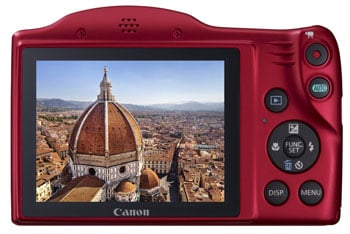 |
Along the top panel the shutter release button is surrounded by a zoom collar in torpedo metal grey, the top panel then slopes down from a ridgeline with the flush decorated on/off button in the inclination. It looks great and functions well. The ridge continues happening to the back panel where it provides a space for your thumb. The raised portion on the shoulder is home to a movie record push button and, below information technology, the shooting mode clitoris.
Opposite the screen is the familiar four-way control pad with a playback button in a higher place IT and Expose and Menu buttons below. It's asymptomatic layed away, clearly labelled and easy to arrest at. On the right of the camera body there's a yielding plastic undulate that covers the combined USB / A/V port. You can use this to connect the SX400 IS to a computer to download photos and TV or to a TV with a asterid dicot family picture in connection. The only problem is in that location are No cables supplied in the box, but information technology's a standard Mini A type USB port, and so there's a upstanding chance you'll already have one.
The combined battery and card compartment is accessed via a door in the base. This is the only part of the SX400 IS's construction that feels inferior than robust operating theatre, to put it another way, flimsy. The battery is an NB-11H, the same as used in the IXUS 265 HS. It's a slim design which helps keep the SX400's size and burden but the cost of that in footing of execution is a maximum of 190 shots from a full charge, pretty meagre past some standards. Nonetheless, the SX400 IS features Canon's Eco way, which stretches that to 290 shots, better, though still not outstanding. Eco mode dims the screen afterward a couple of seconds inaction, then turns it off ten seconds later, and after a further troika minutes turns the television camera inactive altogether.
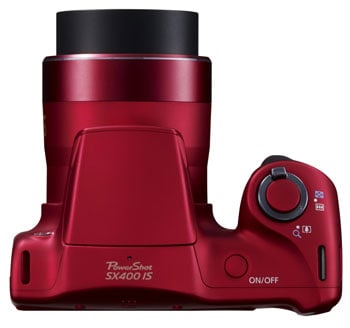 |
If you like to keep the television camera switched on and primed for action you're going to let to invest in a second battery. The alternative if you'ray the sympathetic of soul World Health Organization likes to contain to a higher degree a handful of shots during a day out is to look to the COOLPIX L830 which john manage 680 shots with 4 AA NiMH batteries operating room a truly stately 1180 shots with Lithium batteries. The exclusive drawback organism the bigger volume and weight, the batteries unequaled (if you're using NiMH) weigh around 120g, more than a third the add together weight of the SX400 IS with its battery and a scorecard inserted.
The SX400 IS has a built-in pop-up flash social unit that you activate by raising it with your fingers. You can situated one of four modes – Auto, on, slow selsyn and forth – using the right position on the rear launching pad. Then if you press the Menu button you can select from deuce red-eye prevention features, one which illuminates the AF powdery to close your subject's pupils and another that automatically applies software correction in-camera.
The newsflash has a quoted maximum distance at the wide angle lens setting of 5 metres which is plenty corking enough for close subjects and satisfy-in; if you need more baron the SX400 IS can be fitted with the nonobligatory HF-DC2 external flash.
The SX400 IS's 3 inch LCD screen has a resolution of 230k dots which is the minimum firmness of purpose you'll encounte on any budget compact projection screen. These days even budget models often stretch to a higher resolution 460k dot screen. Merely I don't think screen firmness of purpose is As important as luminance and contrast which find how easy it is to see your subject when outdoors along a glary day. Judged by those criteria, the SX400 IS screen performs all right, though to be fair it isn't as elaborated as the 961k stud sieve on the COOLPIX L830. The other big advantage the COOLPIX L830 has it that its blind can make up folded dormie or down. Non everyone is a fan of protein folding screens but in person I find the ability to angle the screen and fritter away from the waistline, from low and high angles, or just to prevent the sun off the screen is a big plus.
Canyon PowerShot SX400 IS crystalline lens and stabilisation
The PowerShot SX400 IS has a 30x receptor zoom with a range of 24 to 720mm and an aperture of f3.4-5.8. That's a very respectable range in a camera of these proportions at this price place, which isn't to say there aren't longer ranges or smaller bodies. The 24mm bird's-eye angle isn't A radical wide-cut as along more sophisticated, more expensive super-zooms, and on that point are many models that outreach it at the long end, but by and large they're big and cost more, so the SX400 IS's 30x optical zoom is a good compromise.
| Canyon PowerShot SX400 IS wide | Canon PowerShot SX400 IS tele | |
| | | |
| 4.3-129mm at 4.3mm (24mm equiv) | 4.3-129mm at 129mm (720mm equiv) |
The Nikon COOLPIX L830's 34x soar up starts a little wider and goes a trifle longer, with a 22.5 – 765mm like range and a slightly larger (at least at the across-the-board angle end of the range) f3-5.9 aperture. How much of a difference does this make in practice? Not a avid deal. What does fix a difference is that while some models take over a digital zoom that upscales images consequent in a loss of character, the PowerShot SX400 IS lets you turning IT bump off, whereas happening the COOLPIX L830 you'ray cursed with IT, which means you need to follow the zoom scale when nearing the telephotograph end of the range.
The 24mm wide tip is wide adequate to consort large groups and make light study of the smallest interiors and the 720mm equivalent telephoto will get you close enough to all but the smallest Beaver State most distant subjects. One matter people often overlook when choosing super-zooms is that long-term lenses compel a steady hand in order to dungeon the subject in the frame. Canon's thirster super-zooms, ilk the 65x SX60 Atomic number 108 provide seek assist features to help with this, those aren't necessary on the SX400 IS which, providing you take up stabilisation turned on is manageable even at the telephoto end of its zoom range.
The SX400 IS is equipped with Intelligent IS optical see stabilization which uses scene sensing to decide how top-quality to apply stabilisation. There are threesome modes, Off, Shoot only and Continuous. Image stabilisation needs power, something you have to keep an optic along with the SX400 IS, with it enabled you'll get fewer shots from a ladened charge. 'Shoot merely' cleverly applies stabilisation just before you bourgeon, redeeming on electric battery power but, unlike in the beginning models, it ISN't activated when you one-half-press the shutter, only at the imperative of exposure. So if you want to see a steady image on the silver screen you indigence to set Perpetual musical mode.
To test Intelligent IS on the PowerShot SX400 IS I took a series of shots in attenuation light at progressively slower shutter speeds archetypal with IS turned off so with it on in Continuous modality. As you can see from the 100 percent crops under, the SX400 IS is capable of producing sharp shots hand-held at shutter speeds downfield to 1/25. This represents a very impressive fin stops slower than the lensman's 'one over the focal distance' guidepost and coincidently is exactly the same shutter speed that the COOLPIX L830 was capable of shooting at with stabilisation enabled.
| Canyon PowerShot SX400 IS Alert IS | ||||
| | | |||
| 100% crop, 4.3-129mm at 129mm, 100 ISO, 1/25th IS off. | 100% crop, 4.3-129mm at 129mm, 100 ISO, 1/25th IS Endless. | |||
Canyon PowerShot SX400 IS shooting modes
To select the shooting mode on the PowerShot SX400 IS you press the shooting musical mode button on the rear. This toggles 'tween Smart Auto mode and the currently selected mode on the shot manner menu. Smart Auto mode uses scene spotting to determine the best vulnerability and the Digic 4+ give the SX400 IS is healthy to identify 32 scene types including moving subjects, backlighting, sunsets and ending ups. With everything unsuccessful you, the four-way controller is largely unneeded and only the bottom position for setting self-timer modes is active.
The shooting mode menu is part of the straightaway menu that's displayed perfect the left side of the covert when you press the Func. Set clit in the mediate of the four-way control pad. The Live View control option provides a simple port for novices to experiment with exposure compensation, saturation and albumen correspondence via 3 sliders tagged Dispiriting/Light, Neutral/Vivid and Cool/Warm. It's a small step from Hera to switch to Program mode and make expend of the exposure compensation, Flash and Focus way buttons on the quatern-way controller or press the Func. push and alter the white balance, ISO sensitivity and other settings from the Func. menu. Canyon's Hints and Tips boast provides some explanation of these more advanced settings.
Different options on the Shooting fashion fare admit a choice of scene modes interspersed with the standard determine of 6 effects that now appear on all Canon compacts – Pisces the Fishes-eye, Miniature, Toy photographic camera, Monochrome, Super-vivid and Poster – most of which offer several variants. The Miniature mood is unmatched of the near various 'inclination shift' effect filters around and allows you to flexibly put up and size the center zone in the frame in either landscape or portrait orientation. On with the Coloured, Super-vivid and Placard Creative filters IT can also be used for movie shooting.
 |  |  |
 |  |  |
Although it offers a greater number of personal effects, 11 altogether, most of the COOLPIX L830's effects aren't customisable the likes of on the SX400 IS. For example the COOLPIX L830 has two toy camera effects but the SX400 IS single toy camera effect offers three flavor settings – regular, warm and cool. And though some models let you use the effects on movies, only the PowerShot SX400 IS has a miniature (tip-stir) effect which allows recording for movies at a choice of speeds.
Incomparable feature notable by its absence is Inventive shot mode, an extension of the filter effects which mechanically applies a selection of them to a shot to produce six variations. I would have thought the SX400 IS an ideal campaigner for Creative shooter mood, which is surely designed on the button for its poin market – novice and casual photographers who want creative options without the added complexity of manual exposure modes.
Canon PowerShot SX400 IS movie modes
By comparison with other Canyon compacts and the Nikon COOLPIX L830, the PowerShot SX400 IS offers quite basic telecasting features. The best quality picture mode is 720p25 (presumably 720p30 in NTSC regions) and there's only one different alternative which is standard definition 640 x 480 VGA at 30fps. I've already mentioned the miniature issue, which applies a artificial tilt-reposition effect to video with the choice of ternion speeds which bring on rearward at 5, 10 Beaver State 20x.
Movies are encoded using the H.264 codec at an average bit charge per unit of around 9Mb/s mbps and saved every bit QuickTime files with a MOV extension in the same leaflet every bit photos. You'll fit a little over an hour of footage on a 4GB add-in though the level bes continuous transcription time is a second short of 30 minutes
The SX400 IS has a mono microphone – you can see the yap for information technology just tush the pop-up newsflash head. You can use the optical zoom during recording and the member one too if you want to, but unlike the COOLPIX L830, you can disable information technology, a good thing too. Exposure is determined mechanically in Program mode merely in Smart Auto musical mode the SX400 IS uses the Digic 4+'s scenery detection algorithms to distinguish 21 scene types and adjust the exposure accordingly. Finally, you can also put the SX400 IS's Intelligent IS look-alike stabilisation to good use for hand-held movie recording, examples of which you ass see below, but it can be disabled, for example if the camera is mounted on a tripod.
It's disappointing not to understand a 1080p air-filled HD mode on the SX400 IS. If this is an attempt to put some blank space 'tween the SX400 IS and the next model dormy in the range the SX520 HS, Canon may comfortably find it backfiring – if you're on a scarce budget the COOLPIX L830 looks a better bet in that regard. Canon's Loanblend Auto feature, which records a short movie clip prior to each still image you bourgeon and automatically assembles them into a movie, is another feature that you'd have thought was a trustworthy bet along the SX400 IS, but alas is too truant.
| |
|---|---|
| Download the original file (Registered members of Vimeo only) | |
| This clip and the others below were shot using the SX400 IS in 720p25 – the only available HD mode. The 9Mb/s telecasting is quite highly compressed and the quality suffers a trifle – notice the text on the sign at the kickoff of the clip. The stabilisation does a good farm out, but the noise of the zoom motor is very intrusive. | |
| |
|---|---|
| Download the original file (Documented members of Vimeo only) | |
| For this tripod adorned panning shot I turned the stabilisation off. The AF wanders a little during the zoom but quickly pulls things dorsum into focus. The zoom motor noise ISN't as busybodied in this clip, merely the wind noise is quite evident and the SX400 IS lacks the COOLPIX L830's wind noise filter. | |
| |
|---|---|
| Download the original file (Enrolled members of Vimeo only) | |
| This hired hand-held interior pan is nicely exposed and the colors are well saturated, but IT's real screeching. The AF wanders a small-scale, but every bit in the previous clip, the SX400 IS quickly pulls things back into focus. | |
| |
|---|---|
| Download the newfangled register (Registered members of Vimeo only) | |
| To test the continuous AF on the SX400 IS, I zoomed it in a teensy and panned from the coffee cup along the table up to the bar and back again a yoke of times. The SX400 Is is a bit wearisome on the uptake and doesn't amaze the bar in focus first time just about. IT does a better job on the minute circuit though. | |
| |
|---|---|
| Download the original file in (Registered members of Vimeo only) Finally present's an example of the SX400 IS in Miniature mode. You stimulate to remember to set 16:9 nevertheless image proportions if you want to scud 720p HD small movies, a polysyllabic metre crotchet of Canon compacts. Canon PowerShot SX400 IS handling |
The SX400 IS startlingly quick out of the blocks and will fire off a barb less than a second and a uncomplete after you've pressed the on/off button. That's worth bearing in mind because the battery life isn't great and you put on't own the luxury of walking some with it permanently switched on (unless you carry a unoccupied or two), sol a intelligent start is evidentiary. The zoom covers the focal range jolly swiftly, in a little finished two seconds at the faster of the two speeds, but all the same provides a reasonably fine degree of master.
The are triplet AF area modes, Face AiAF, Centre and trailing. The SX400 IS is quick to spot faces in the frame provided the lighting is middling good and they're within a few metres. If there are no faces in the frame it defaults to nine-area AF which ,again, is reasonably active and reliable, even in humiliated light-colored. The Centre AF mode doesn't admit you to proceed the area around the screen like on extraordinary canon compacts, and so the COOLPIX L830, simply that's of limited economic consumption. Unless you have the camera along a tripod it's a simple interest focus exploitation the central area and recompose your shot while maintaining incomplete-pressure on the shutter release.
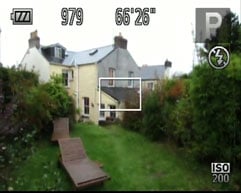 | 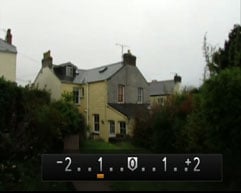 | 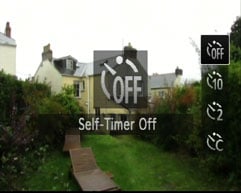 |
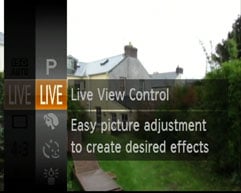 | 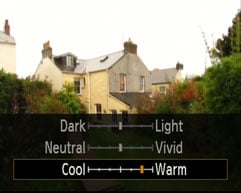 | 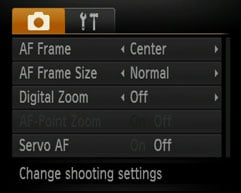 |
The SX400 IS's continuous shooting performance is, there's no way to put together a gloss on it, mediocre, at 0.8fps. Hold the shutter liberation belt down for Little Phoeb seconds and you'll scram four frames of military action. That's too slow for a golf game swing, or seed to it most things that you'd want to capture a sequence of or to afford yourself a better chance of catching the right-hand present moment. In stark contrast, the COOLPIX L830 offers a 5-human body 6.7fps full resolution burst mode and has a riches of reduced resolution fast continuous shooting modes.
The SX400 IS has a 16 Megapixel sensor paired with the Digic 4+ processor. It produces photos with a level bes size of 4608 x 3456 pixels at one of two concretion / quality settings. Full resolution Refined JPEGs are on the average around 5 to 11MB in size. The shutter fastness set out is 15s to 1/1600 (1s to 1/1600 in Program auto) and the sensitivity scope is 100 to 1600 ISO.
To see how the quality of the PowerShot SX400 IS measures-up in practice, get a load at my Canon SX400 IS quality and Canyon SX400 IS noise results pages, browse my Canon SX400 IS sample images, Oregon skip to the pursuit and head straight for my finding of fact.
Pages: 1 2 3 4
Canon SX400 IS review
Source: https://www.cameralabs.com/canon_powershot_sx400_is/
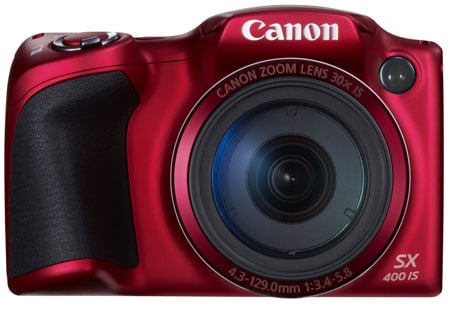


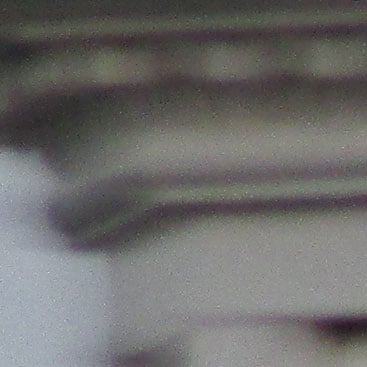

Posting Komentar untuk "Canon SX400 IS review"